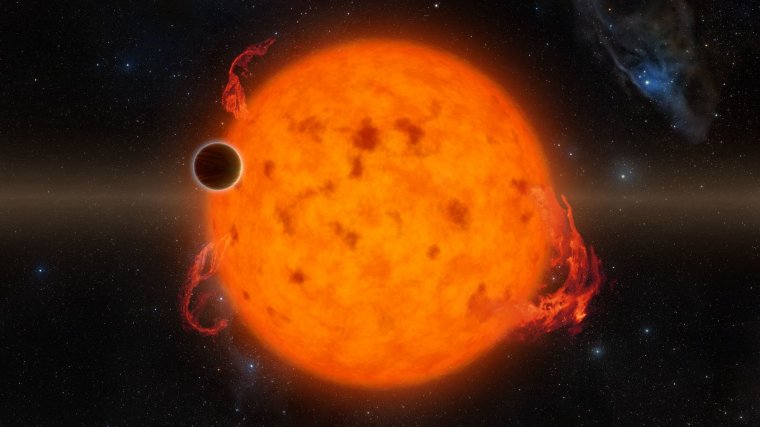| News / Space News |
NASA's K2 Finds Newborn Exoplanet Around Young Star
NASA | JUNE 29, 2016
Astronomers have discovered the youngest fully formed exoplanet ever detected. The discovery was made using NASA's Kepler Space Telescope and its extended K2 mission, as well as the W. M. Keck Observatory on Mauna Kea, Hawaii.

K2-33b (artist's concept) is one of the youngest exoplanets detected to date. ![]()
The newfound planet, K2-33b, is a bit larger than Neptune and whips tightly around its star every five days. It is only 5 to 10 million years old, making it one of a very few newborn planets found to date.
The first signals of the planet's existence were measured by K2. The telescope's camera detected a periodic dimming of the light emitted by the planet's host star, a sign that an orbiting planet could be regularly passing in front of the star and blocking the light. Data from the Keck Observatory validated that the dimming was indeed caused by a planet, and also helped confirm its youthful age.
Infrared measurements from NASA's Spitzer Space Telescope showed that the system's star is surrounded by a thin disk of planetary debris, indicating that its planet-formation phase is wrapping up. Planets form out of thick disks of gas and dust, called protoplanetary disks, that surround young stars.
A surprising feature in the discovery of K2-33b is how close the newborn planet lies to its star. The planet is nearly 10 times closer to its star than Mercury is to our sun, making it hot.
The science team says there are two main theories that may explain how K2-33b wound up so close to its star. It could have migrated there in a process called disk migration that takes hundreds of thousands of years. Or, the planet could have formed "in situ" -- right where it is.
YOU MAY ALSO LIKE


